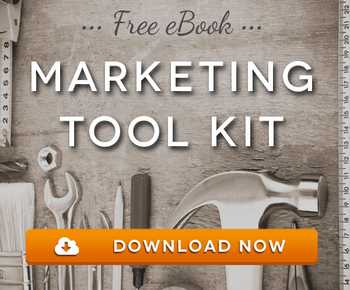 I know it might be tough to hear, but it must be said: your website is not for you. I'm not trying to hurt your feelings, but this is a fact every business owner should know. When designing your website and writing content for it, you should have these "people" in mind while doing so: your buyer personas. The truth is, prospects are searching in earnest for your website in order to answer the burning questions they have and it's your job to answer them. It's not only your job, it's in your best interest. It's easy to get caught up in certain colors and pictures that you feel work best or are necessary for your site, but your views may not match those of your buyer personas. You may have to give up your wants and needs, and do what's best for your website visitors.
I know it might be tough to hear, but it must be said: your website is not for you. I'm not trying to hurt your feelings, but this is a fact every business owner should know. When designing your website and writing content for it, you should have these "people" in mind while doing so: your buyer personas. The truth is, prospects are searching in earnest for your website in order to answer the burning questions they have and it's your job to answer them. It's not only your job, it's in your best interest. It's easy to get caught up in certain colors and pictures that you feel work best or are necessary for your site, but your views may not match those of your buyer personas. You may have to give up your wants and needs, and do what's best for your website visitors.
You website should help your visitors solve their problems.
Yes, your website is your message to the world; of course you should think long and hard about how you communicate this message. However, it's not all about what you think looks and sounds good. What you think looks good may not line up with what your visitors are looking for. Your website should be designed to help your visitors solve their problems and answer their questions. The best way to make this happen is to check your motives and keep your buyer personas in mind. You'll need to know your buyer personas well enough to predict what their likely path will be once they come to your website. You'll need to know why they are there, what they're looking for, and how you can help. If you don't know these items already, it's time to get to interviewing and evaluating your personas. You should ask them exactly what factors they like and dislike regarding their user experience. Once you know the answers to these questions, you can make your buyer personas feel loved by designing for their goals. They will appreciate your brand, be more likely to buy your product, and rave about their experience all because you went out of your way to tailor your website for them instead of yourself.
Instead of making it look pretty, make it pleasing to the eye of your persona.
It's no secret that simplicity and consistency are the ultimate elements of a successful website in today's world. That doesn't mean that everyone is 100% aware of this fact. Some business owners insist on having a picture slider, all the awards they've won, plus five paragraphs of information on their homepage for no other reason than to show they are "the best." Don't be that guy! If you are the best at what you do (and even if you aren't!) your website will reflect that - if you put thought and time into making your website for your buyer personas. The truth of the matter is, visitors that come to your site don't want to hear about the awards you've won right off the bat. They are looking for a website that is easy to navigate and that provides solutions to their problems that they are scouring the web trying to solve. This is why useful and easily digested content is so important. This is also why white space is crucial. White space is defined as the empty space between paragraphs, pictures, and buttons on your page. White space declutters your website by giving items room to breathe. It's easy on the eyes and is important for showing relationships between items on the page. If your prospects gain answers to their problems and realize you are an expert in your industry, they will be more likely to purchase your product or service.
If your website doesn't do what the visitor wants it to - quickly and easily - you will lose them.
In creating and maintaining your website, you want to make the path of your users fool-proof. According to statisticbrain.com, 17% of page views last fewer than 4 seconds. This is why it is so important to have features like fast loading time, good content structure, and easy navigation. Additionally, if visitors reach your homepage and are bombarded by irrelevant content and other viewing attributes that aren't important to them, they have a higher chance of leaving your site all together. You don't want that, now do you? The whole goal of inbound marketing is to attract visitors and convert them into leads and then customers. This is done by problem solving, offering useful content, and providing a clear path for their next step. Keeping your buyer personas engaged and wanting more will encourage them to become interested in your product, believe in your message, and support your cause.
This post may be a bit of a reality check for most of you, but that is no reason to become discouraged. Doing what's best for your website users is in your best interest and theirs. It may have been your way of thinking in the past that your website is the place where you boast your strengths and awards. Now, it's time you take what you've learned and turn your website into an informational hub for your buyer personas. It's up to you to create an enticing paradise for users to spend their time in on the web. Remember: it's not about you, it's about them!





